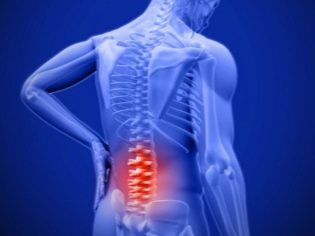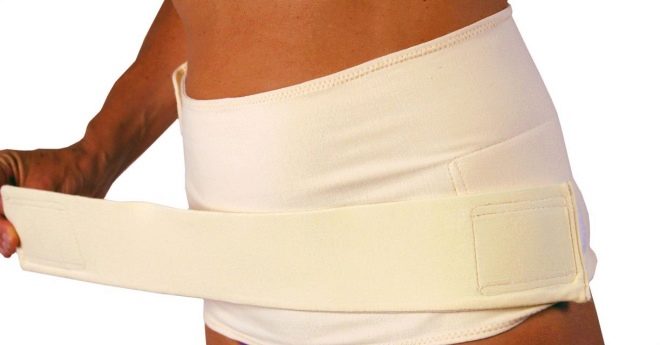When can I lie on my stomach after cesarean section?
Sleeping on your stomach is a favorite activity of a good half of women and not less men. During pregnancy, a woman gradually withdraws from such a pose, because a big belly cannot be squeezed. In the nine months of sleep on the side, many are pretty tired of this and dream of lying down on the belly after birth.
After natural childbirth, this does not raise questions, but after a cesarean section, everything is not so clear, because there are stitches on the stomach. In this article, we will find out whether the woman in labor after the operation can lie on his stomach and sleep in this position.
Feelings after surgery
What feels like a woman who had a cesarean section a few hours ago, only she knows herself and those who have gone through it. The uterus from reducing drugs that are administered on schedule is intensively reduced. Stitches on the stomach are sore, pulling, “burning”. In the first couple of days, to relieve the sensation of pain, women are given painkillers, and this allows us to survive the most difficult time. But even then, for quite a long time, a woman in labor is difficult to cough, laugh, do everything that causes even the slightest tension in the anterior abdominal wall.
In this situation, there is usually no question of lying on the stomach. And the point is not that it can harm something. It is elementary for a woman to do this. Fear in this case is dictated by the instinct of self-preservation - if there is pain, the impact on the area of the presence of pain should be avoided at all costs.
Already on the fifth day, the severe pain recedes, the seams begin to draw less, the woman adapts, gets used to them, begins to clearly understand how to sit down or lie down with the least discomfort, how to get up or walk, so that it is not painful and unpleasant. Along with a decrease in pain, fear also decreases.
Therefore, once home after discharge, the newly-made mother may well recall her long-time dream - to sleep on her stomach. But alas, there is a response to many questions about what is possible and what is impossible, but there is not a word about the pose on the stomach.
Opinion of doctors
The puerperal women are so impressed by the numerous "no" that they automatically continue to think that sleeping on the stomach can harm the external suture condition or damage the internal scar, located on the front wall of the uterus. But here they are in for a pleasant surprise - doctors not only allow them to do this, but also argue that lying on their stomach is extremely useful after any birth. And surgical delivery is also no exception.
You can lie on your stomach as soon as it is comfortable and pleasant, as soon as the fear of accepting this posture passes.
The only wish is the first two days after operative labor, it is still better to refrain from such coups, because the mode of physical activity, although it should be sufficient, but gentle. After two days - no restrictions. A woman can sleep on her stomach if she likes this position.
It is possible to inform lovers of sleeping in this way that after the operation it is not only pleasant, but also useful:
- this posture reduces the likelihood of internal adhesions and fistulas in the postoperative suture area;
- the muscle tissue of the abdomen, usually quite loose from pregnancy, is restored somewhat faster, its tone returns, and the abdomen “leaves” more quickly;
- the work of the gastrointestinal tract is improved (this is important, given the tendency of women after a cesarean section to constipation and bloating);
- the inner scar is formed more consistent and even (this statement is not proven, but such an opinion, including in the medical professional environment, really exists);
- the reverse development of the uterus (contraction) is proceeding at a faster rate, which has a positive effect on women's health, on the future recovery of the regular menstrual cycle;
- the muscles of the back relax and rest, which “worked” in a heightened mode throughout the pregnancy, especially in its later periods;
- relaxation of the back muscles allows you to return to normal posture, gait, improves the condition of the vertebrae;
- postpartum discharge (lochia) move away faster, the uterus cavity clears faster.
But before you happily roll over on your stomach, you still need to ask about the possibility to do this with your doctor.
You can do it right on the bypass in the hospital. Do not be shy and afraid to look ridiculous, this question is quite normal and reasonable. After all, such a pose has its own contraindications.
Who can not lie in this position?
Avoid long lying on the stomach and even more sleep in this position, should be women whose anatomical location of the uterus has a deviation from the norm. So, when bending the reproductive organ while lying on the abdomen, lochia discharge is difficult, and their stagnation can cause a severe inflammatory process.
Women should not sleep on their stomachs either after surgery or after natural childbirth in the event that there are cardiovascular diseases. Such a posture can cause significant difficulties in breathing during sleep and will contribute to the development of arrhythmia.
Women who have problems with the lumbar spine, also should not sleep on the stomach, because with this position the vertebrae of this particular department undergo significant stress.
The presence of lactation is a conditional contraindication, which, upon closer examination, can be called such a stretch. Rather, this is just a physical inconvenience, since the swollen large breasts simply do not allow you to lie down comfortably on your stomach, and during sleep, breast milk may “leak” in such a pose if the mammary glands are compressed.
Other postures - how appropriate?
Sleeping on the side is not prohibited, moreover, in such a position of discomfort a woman has less.
It will be convenient for those who practice joint sleep with the baby to feed the baby at night on demand - it does not even need to take a different body position. But there is a side negative position and one significant minus - the muscles of the peritoneum somewhat sag in that position, as a result, the stomach remains relaxed longer, its shape is restored longer.
Rest on the back is not prohibited. If such a posture is quite comfortable for the puerperal itself, it may well take her, but with one limitation - the woman must wear a postpartum bandage.
Since it is not recommended to sleep in such an orthopedic product, the posture on the back is clearly not suitable for night rest. If a woman spends a lot of time on her back, the stitches will “spread out”, heal longer, the formation of an ugly seam on the anterior abdominal wall is possible.
But there are poses that are undesirable after surgical delivery for a variety of reasons.
So, a woman is forbidden to spend a long time in a sitting position. Under no circumstances should you fall asleep in a sitting position, for example, in a rocking chair. More blood flows to the uterus in a sitting position, the load on the operated organ increases, which can cause long-term healing of internal scars, as well as cause bleeding.
Reviews
According to the reviews of women, many are literally forced to roll over on their stomachs while they are still in the hospital.This is especially true for women who have not well reduced uterus after surgical labor. They argue that the pain and fear can quickly be overcome, because the medical staff at any time is ready to show you how to turn on your tummy correctly without causing yourself any harm. Women are advised to turn around after the injection of painkillers - this will be easier.
At home, many say, it was possible to roll over onto the stomach without significant discomfort approximately 10-14 days after the operation.
For a quick recovery after a cesarean section, see the following video.






















